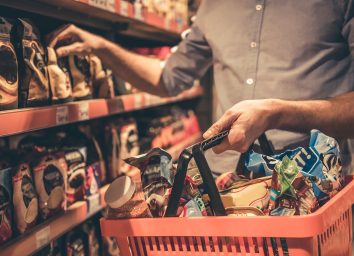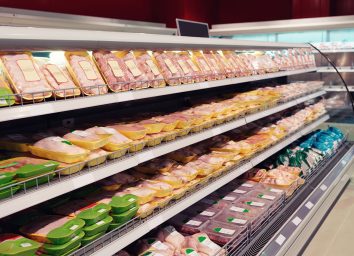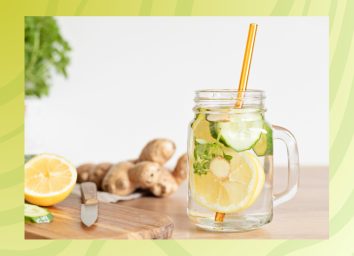This Common Food Can Reach Consumers Even If "Dangerously Contaminated" With Salmonella
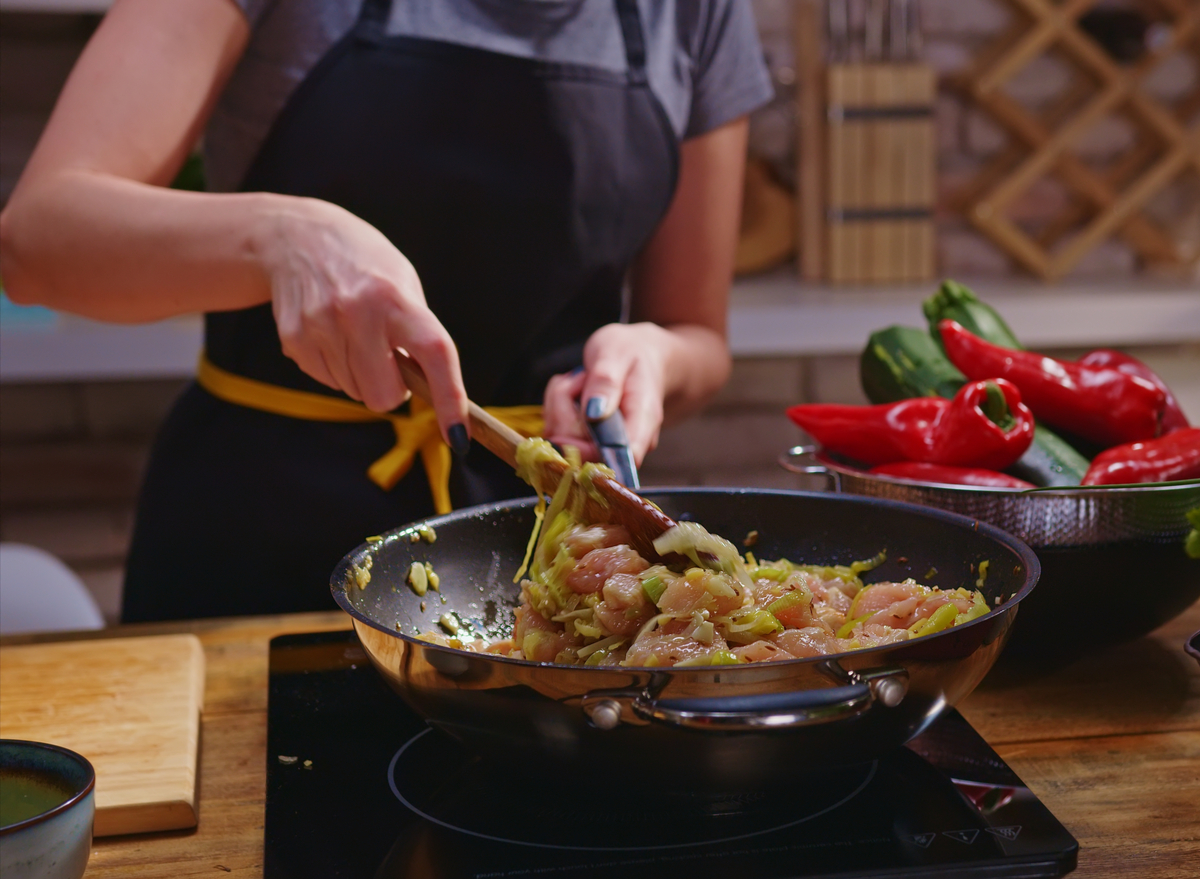
In the United States, chicken is king. According to the National Chicken Council, we buy more chicken than any other food that takes center stage on our dinner plates. We choose chicken much more often than seafood and even more than beef. In fact, it is estimated that Americans will consume 98.2 pounds of chicken per capita this year alone—up considerably from 1960 when it was 28 pounds per capita.
Meanwhile, the Centers for Disease Control and Prevention (CDC) reports that salmonella infections are the leading cause of hospitalizations and death from food poisoning in the United States. Guess which food is a significant source of salmonella contamination? If you guessed chicken, you're right.
"The salmonella illness rate in the United States hasn't changed [much] in over 20 years," said Dr. James Kincheloe, the food safety campaign manager for the Center for Science in the Public Interest (CSPI). "We're at the point where there is wide agreement that more needs to be done to protect the public."
And don't miss Thousands Of Unregulated Chemicals Are Currently In Your Food, Experts Say.
Improper handling
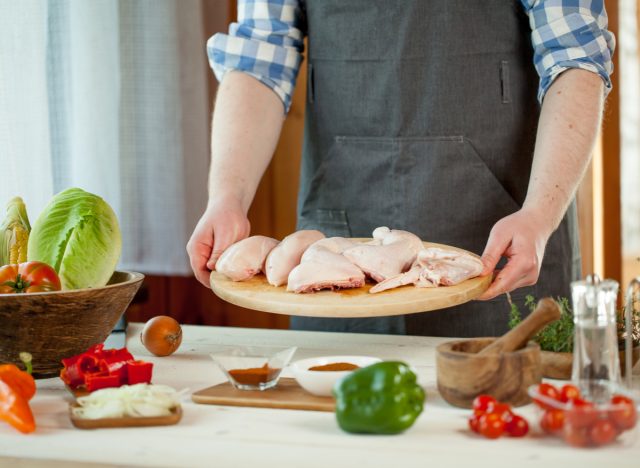
If you didn't already know, salmonella can't survive on chicken if the meat is cooked correctly. But, it can survive on your countertops, sink, sponges, fingers, clothes—any surface that has been touched by the contaminated meat and hasn't been properly cleaned afterward. Despite consumer education efforts by the CDC, USDA, and the National Chicken Council, consumers still aren't handling their food properly to ensure bacteria like salmonella and others don't end up in their bellies and potentially cause harm.
"Most consumers don't fully implement all the food safety precautions we should be taking even when we're cooking for ourselves, and we also don't always have control of who is preparing our food," says Sarah Sorscher, deputy director of regulatory affairs for CSPI. "If we want to improve illness rates, just focusing on consumer behavior will not be enough. There are just too many people to reach and retrain. That's why … we need to start thinking about the changes we can make further up the pipeline to make sure dangerous bacteria never reach our kitchens in the first place."
Not enough standards in place
In January 2021, CSPI, Stop Foodborne Illness (STOP), Consumer Reports (CR), and other advocacy groups petitioned the USDA to create and implement modernized and enforceable science-based standards to reduce and eventually eliminate the salmonella strains of greatest public health concern. Of the 2,500 known strains of salmonella, fewer than 100 have been tied to human infection and illness. Some strains are deadlier than others.
"We also called for regulations that would require poultry plants to identify and control food safety risks within their supply chains, including risks from salmonella," said Brian Ronholm, director of food policy for Consumer Reports. "The point of this is to have these plants establish testing programs of incoming raw material to verify the effectiveness of their supply chains to control salmonella."
To date, the USDA's Food Safety and Inspection Service (FSIS) jurisdiction over chicken and other poultry does not begin until the chickens enter the slaughterhouse. FSIS has no authority to test for salmonella at any point prior to that, even on the farm, Ronholm explained. The petition for changes is a way of addressing this gap in the regulations.
Kincheloe said another issue of concern is that salmonella-contaminated poultry can be sold to consumers with a USDA mark of inspection on the package because the current standards are "unenforceable." Poultry establishments are judged on a year of weekly sampling results, and there are only so many salmonella-positive test weeks allowed to meet the USDA standards, he explained.
The only immediate consequence of failing to pass these standards, however, is that UDSA can post the results publicly. Unfortunately, the products known to be contaminated with the most dangerous strains and amounts of salmonella are still being sent out to consumers.
"We want standards that say that if we know about a product [that is] dangerously contaminated—whether with a dangerous salmonella type, amount, or a combination—the product won't be able to reach consumers in that form," Kincheloe concluded.
Changes are coming
In October 2021, the USDA published a press release stating that the FSIS was mobilizing "a stronger, and more comprehensive effort to reduce salmonella illnesses associated with poultry products" and take action to "move closer to the national target of a 25% reduction in salmonella illnesses."
According to an FSIS spokesperson, since launching this initiative late last year, the agency has diligently been gathering information (phase one). "We have met with stakeholders—at roundtables, conferences, and meetings with interested groups and coalitions— about their ideas. We've asked for recommendations from food safety experts to help guide our strategy. We've also solicited ideas for pilot projects from industry to test drive different control strategies in poultry establishments," the spokesperson said.
FSIS is looking for ways to "incentivize reductions in salmonella contamination in chickens as they come into the slaughterhouse," the spokesperson continued. The agency is focused on salmonella strains that pose the greatest public health risk and plans to present a draft framework for a revised strategy later this year and convene a public meeting to discuss it.
What you can do
Until stricter regulations are in place and enforced, here are some things you can do to protect yourself.
- Don't wash your chicken. Ever. We get it, chicken is slimy and that mystery liquid it comes in is pretty gross. But, that doesn't mean you should wash chicken off in the sink before cooking it. "[Washing chicken] doesn't decrease bacteria on the chicken. It just spreads it around the sink and kitchen," Kincheloe said. You can use paper towels to dry chicken off if you must, just don't touch the trash-can lid if you haven't washed your hands yet with soap and water.
- Cook chicken thoroughly. While some foods can be enjoyed as rare or medium-rare, chicken is not one of those foods. Sorscher said most tips suggest cooking chicken until it is 165-175 degrees internally, but she feels it tastes better at 180 degrees. She also said to use a quality meat thermometer to be on the safe side.
- Keep everything separate. To avoid cross-contamination issues, Sorscher suggested keeping produce, spices, containers like colanders, and cutting boards separate. For example, don't chop your lettuce on the same cutting board you used to prepare your chicken breasts.
- Microwave sponges. If you wash your dishes with the same sponge for several weeks or months, hopefully, you're popping them in the microwave every so often to kill all the germs on it, especially if you wash something that previously contained raw chicken.

